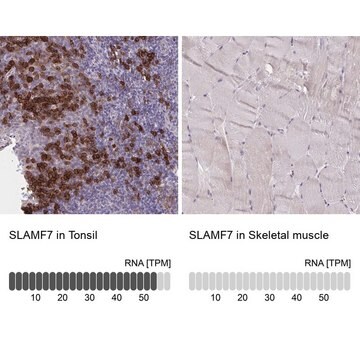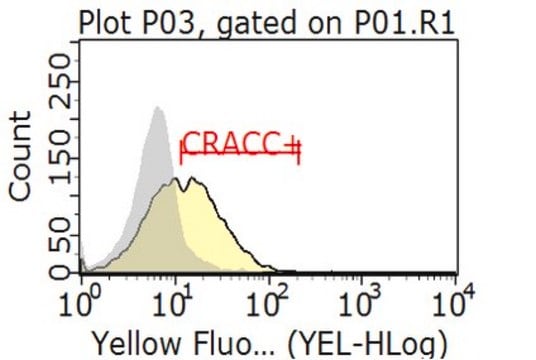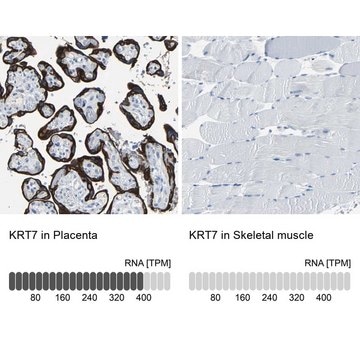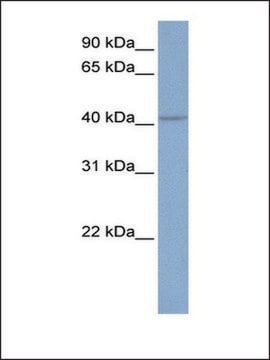MABF2093
Anti-SLAMF7 (CD319) Antibody, clone 162
clone 162, from mouse
Synonyme(s) :
SLAM family member 7, CD2 subset 1, CD2-like receptor-activating cytotoxic cells, CRACC, Membrane protein FOAP-12, Novel Ly9, Protein 19A, CD319
About This Item
Produits recommandés
Source biologique
mouse
Forme d'anticorps
purified immunoglobulin
Type de produit anticorps
primary antibodies
Clone
162, monoclonal
Espèces réactives
human
Conditionnement
antibody small pack of 25 μg
Technique(s)
flow cytometry: suitable
immunohistochemistry: suitable (paraffin)
immunoprecipitation (IP): suitable
inhibition assay: suitable
Isotype
IgG2bκ
Numéro d'accès NCBI
Numéro d'accès UniProt
Modification post-traductionnelle de la cible
unmodified
Informations sur le gène
human ... SLAMF7(57823)
Description générale
Spécificité
Immunogène
Application
Flow Cytometry Analysis: A representative lot detected SLAMF7 (CD319) in Flow Cytometry applications (Bouchon, A., et. al. (2001). J Immunol. 167(10):5517-21).
Affects Function Analysis: A representative lot stimulated SLAMF7, which resulted in an increase SHIP-1 tyrosine phosphorylation in OPM2 and MM1S cells expressing EGFR-CD45. (Guo, H., et. al. (2015). Mol Cell Biol. 35(1):41-51).
Inhibition Analysis: A representative lot blocked the augmented capacity of human blood-derived macrophages to engulf Raji cells in response to anti-CD47 antibodies. (Chen, J., et. al. (2017). Nature. 544(7651):493-497).
Immunoprecipitation Analysis: A representative lot immunoprecipitated SLAMF7 (CD319) in Immunopreciptation applications (Bouchon, A., et. al. (2001). J Immunol. 167(10):5517-21; Tassi, I., et. al. (2005). J Immunol. 175(12):7996-8002).
Inflammation & Immunology
Qualité
Immunohistochemistry (Paraffin) Analysis: A 1:50 dilution of this antibody detected SLAMF7 (CD319) in human tonsil tissue sections.
Description de la cible
Forme physique
Stockage et stabilité
Autres remarques
Clause de non-responsabilité
Vous ne trouvez pas le bon produit ?
Essayez notre Outil de sélection de produits.
Certificats d'analyse (COA)
Recherchez un Certificats d'analyse (COA) en saisissant le numéro de lot du produit. Les numéros de lot figurent sur l'étiquette du produit après les mots "Lot" ou "Batch".
Déjà en possession de ce produit ?
Retrouvez la documentation relative aux produits que vous avez récemment achetés dans la Bibliothèque de documents.
Notre équipe de scientifiques dispose d'une expérience dans tous les secteurs de la recherche, notamment en sciences de la vie, science des matériaux, synthèse chimique, chromatographie, analyse et dans de nombreux autres domaines..
Contacter notre Service technique








